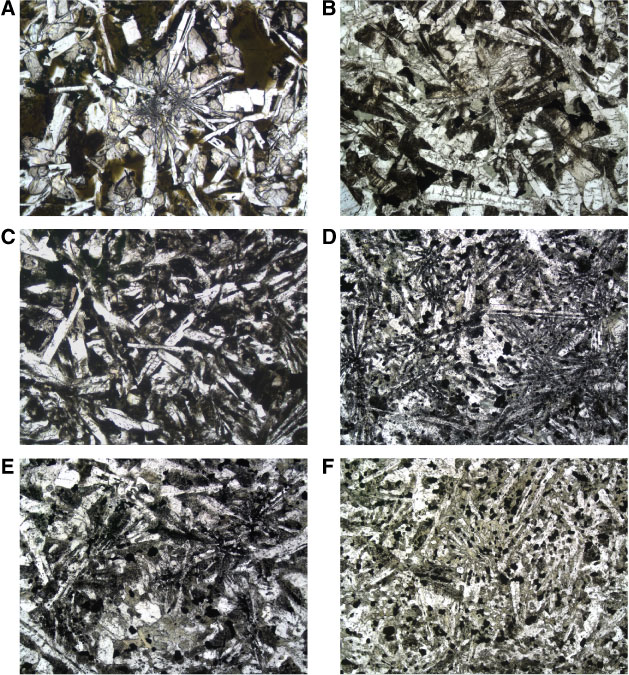
Figure F212. Representative metamorphic texture Types 2–7 (see Table T36). Texture Type 1 (not shown and not abundant in Hole 1256D) is fresh basalt with unaltered minerals and glasses. A. Texture Type 2 with fresh clinopyroxene and plagioclase but altered interstitial glass (Thin Section 109; Sample 206-1256D-13R-1, 109–111 cm) (field of view [FOV] = 1.2 mm; plane-polarized light). B. Texture Type 3 with modestly altered clinopyroxene (<50%) by brown fibrous masses (basically actinolite), completely altered glass, and fresh plagioclase filled in hollows by chlorite and dusty cryptocrystalline material (Thin Section 3; Sample 312-1256D-173R-2, 6–10 cm) (FOV = 1.2 mm; plane-polarized light). C. Texture Type 4 with extensively altered clinopyroxene (>50%), disseminated tiny oxide grains, completely altered glass, and plagioclase filled in hollows by chlorite and dusty cryptocrystalline material (Thin Section 17; Sample 312-1256D-178R-1, 31–34 cm) (FOV = 1.2 mm; plane-polarized light). D. Texture Type 5 with almost completely altered clinopyroxene to fibrous actinolite. Plagioclase containing discrete tiny crystals of oxides plus actinolite (Thin Section 32; Sample 312-1256D-192R-1, 11–13 cm) (FOV = 1.2 mm; plane-polarized light). E. Texture Type 6 with complete replacement of clinopyroxene by actinolite, which occurs now in a larger grain size and stronger brownish color. True hornblende (green) is visible. Tiny Fe-Ti oxide grains are now idioblastic. (Thin Section 36; Sample 312-1256D-196R-1, 32–33 cm) (FOV = 1.2 mm; plane-polarized light). F. Texture Type 7 with secondary clinopyroxene and actinolitic amphibole, recrystallized oxide grains, and plagioclase (Thin Section 39; Sample 312-1256D-198R-1, 45–49 cm) (FOV = 1.2 mm; plane-polarized light).

Previous | Close | Next | Top of page